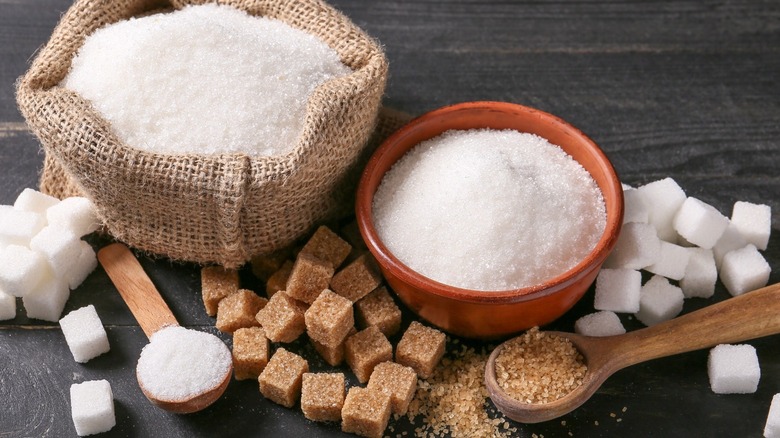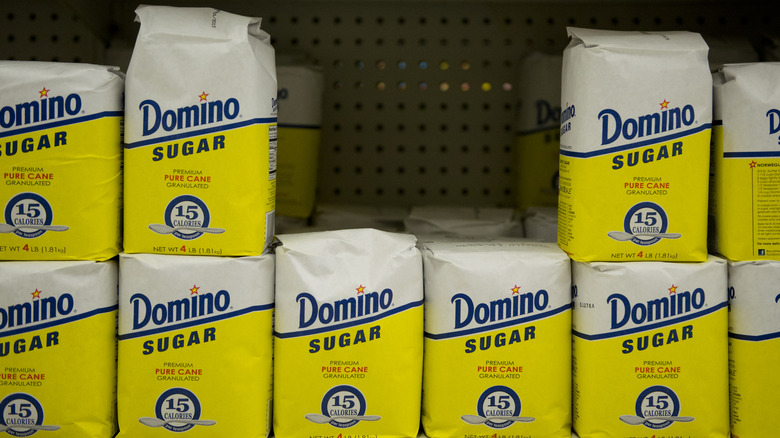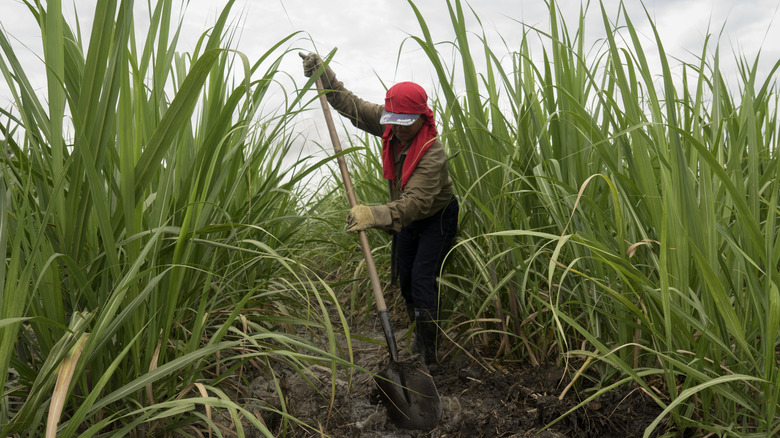What The Sugar Shortage Could Mean For Candy Prices In 2022
If this wasn't 2021, and if we hadn't already seen our supermarket aisles depleted of turkeys and chickens, bottled water, and canned goods (via Taste of Home), we'd probably have a difficult time believing that there would come a day when candy canes would be impossible to find — yet here we are. While, in a normal year, the seasonal item might eventually find its way into the bargain bin after Christmas due to a surplus, candy canes this year have become scarce. In some parts of the country, they've even disappeared into thin air, just like Grape-Nuts and some of our favorite canned beverages.
Some of the scarcity and disappearances in the grocery store might be explained by supply chain problems linked to the Coronavirus pandemic; others, like the issues that have caused Christmas candy canes to disappear, are more complex than they might seem. In this case, it's being triggered by a sugar shortage.
Bad weather has made sugar prices stay high
This year's candy cane shortage hasn't been caused by a lack of peppermint — although that certainly played a role. There are also fewer to hang on the tree this year thanks to a sugar shortage, which first came about when Brazil experienced unseasonal frosty temperatures that in turn triggered wild swings within the commodities market, thereby causing the price of sugar to rise in the process. All this, because as The Wall Street Journal points out, the cold snap left Brazil's high producing regions with sugar cane plants that were smaller and had lower yields than years prior. Not long after the frost hit, sugar traders were guessing that this year's harvests would plummet to between 29 and 33 million metric tonnes from 38.5 million a year before. And, it didn't help that the previous harvests were already poorer than expected.
Unfortunately, American candy consumption didn't follow this drop in sugar production because, according to the National Confectioners Association, candy sales actually rose 20% from last year, and the winter holiday candy season has increased by more than a third — or 34% — from 2020 (via CNBC). This means that, even though producers have been unable to grow more sugar, Americans have been eating much more candy. And we all know what happens with this supply-demand dynamic — lots of shortages.
Sugar prices are also being affected by supply chain issues
Unseasonal frost isn't the only problem sugar farmers are currently contending with — they also have to walk in the same shoes as every other exporter that operates within the global supply chain right now, which means sugar shipments are being subject to the same uncertainties triggered by the Coronavirus pandemic. Then, there is also the additional price boost generated by hedge funds, which are helping to keep prices elevated because they are betting the levels will stay that way. As a result, sugar prices are expected to remain high, at least for the next few months (via The Wall Street Journal).
All this bodes well for the sugar farmer, who has been selling his or her harvests at depressed prices for the past few years. But that's no longer the case today as analysts are predicting that prices will remain high as we move into 2022. As Retail Detail points out, if wholesale sugar prices stay high, retailers will eventually start passing that price increase onto the consumer — so expect to see the price of candy go up in 2023. Unfortunately, knowing when that price will retreat again is anyone's guess.


